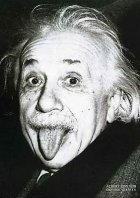How to solve problems
Every problem you encounter, whether in chemistry or elsewhere, is solved in essentially the same fashion. First, you size up the situation or read the problem carefully, and decide what you are supposed to do and what you have to do it with. Second, having determined what you are supposed to do and what you have to do it with, you figure out how to do it. Third, you go ahead and solve it according to plan. Finally, you look at what you have done. The first two steps represent the analysis of the problem. The third step represents the arithmetical calculations. Some problems are knottier than others, but they are all solved by these three fundamental steps. The last step is equally important. It will help you to avoid many errors.
To be more specific, when you go about solving any problem in any book or in any test or examination:
1. Read the problem carefully. Note exactly what is given and what is sought. Recognize that most chemistry problems contain more information than is explicitly given. For example, if a problem specifies a given mass of water, it is also specifying a given number of moles, molecules, and atoms. Note any and all special conditions. Be sure you understand the meaning of all terms and units and that you are familiar with all chemical principles relevant to the problem. Every problem you are given is designed to illustrate some principle, some relationship, some law, some definition, or some fact. If you understand the principle, relationship, law, definition, or fact, you should have no difficulty solving the problem. The one big reason, almost the only reason in fact, why students have difficulty with chemistry problems is failure to understand, exactly and well, the relevant chemical principles and the meaning and value of all terms and units that are used in the problem.
2. Plan, in detail, just how the problem is to be solved. Get into the habit of visualizing the entire solution before you execute a single step. Insist on knowing what you are going to do and why you are going to do it. Aim to learn to solve every problem in the most efficient manner; this generally means doing it the shortest way, with the fewest steps.
3. Specify definitely what each number represents and the units in which it is expressed when you actually carry out the mathematical operation of solving the problem.
Don't just write
192/32 = 6
Wnte
192 g sulfur / 32 g sulfur per mole of sulfur = 6 mol sulfur
or whatever the case may be. Always divide and multiply the units as well as the numbers. This procedure is one way to give exactness to your thought process and is a very good way to help avoid errors. You should jot down the unit or units in which your answer is to be expressed as the first step in the actual solution. For instance, if you are solving for the mass of oxygen in 200 g of silver oxide, you should jot down the fact that the answer will be " _______ g of oxygen." Many problems are worked backward, since you will often first focus your attention on the units in which the answer is to be expressed and then plan the solution with these units in mind.
4. Having solved the problem, examine the answer to see if it is reasonable and sensible. A student who reports that 200 g of silver oxide contains 1380 g of oxygen should know that such an answer is not sensible. Get into the habit of checking the answer to see if it makes sense.
5. If you do not understand how to solve a problem have it explained to you at the very earliest possible time. To be able to solve the later problems you must understand the earlier ones. After a problem has been explained to you, fix the explanation in your mind by working other similar problems at once, or at least within a few hours, while the explanation is still fresh in your mind. Test yourself to be sure that you can apply your understanding of the solution.
 Albert Einstein (1879-1955) |